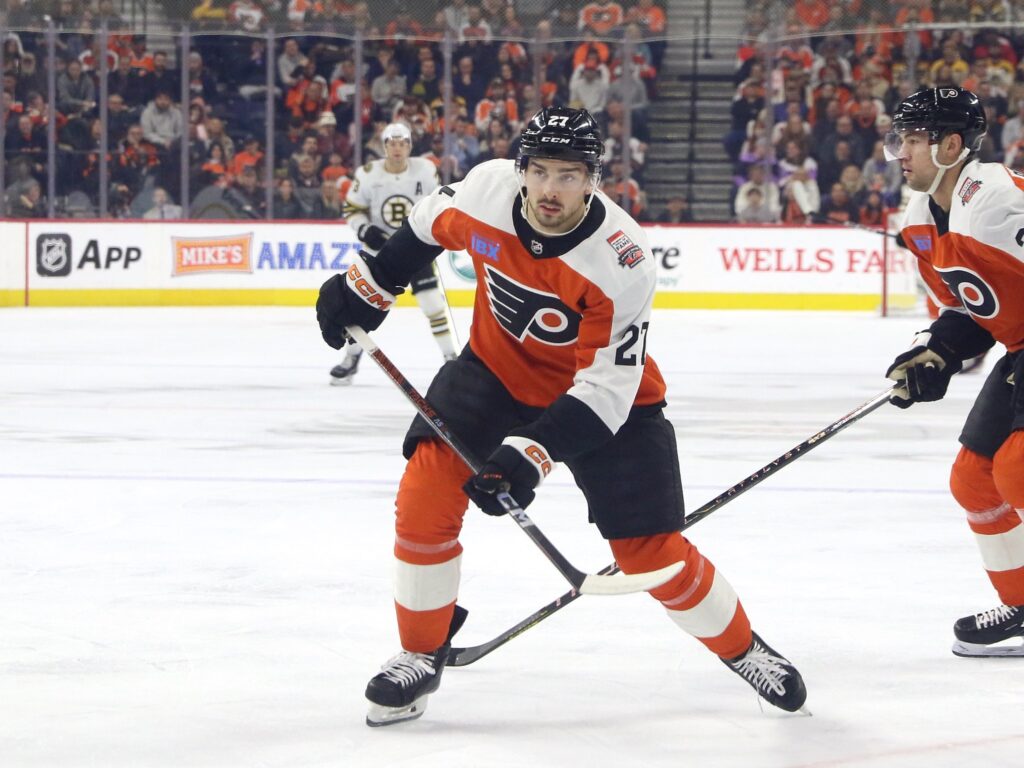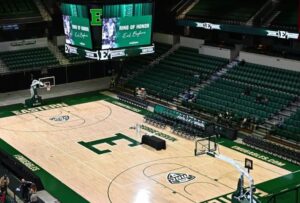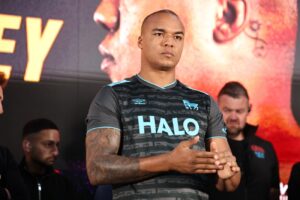The Florida Panthers look poised to return to the Stanley Cup Final. Again.
In Game 1 of the Eastern Conference Final, the hosting Carolina Hurricanes got more than they could handle. They earned a convincing 5–2 defeat at the hands of the Panthers.
Related: 4 Takeaways From Panthers’ Game 1 Victory Over the Hurricanes
Scoring the game-winning goal on the night was Florida’s fourth line. But that was far from an outlier performance—the trio of A.J. Greer, Tomáš Nosek, and Jonah Gadjovich has excelled all postseason.
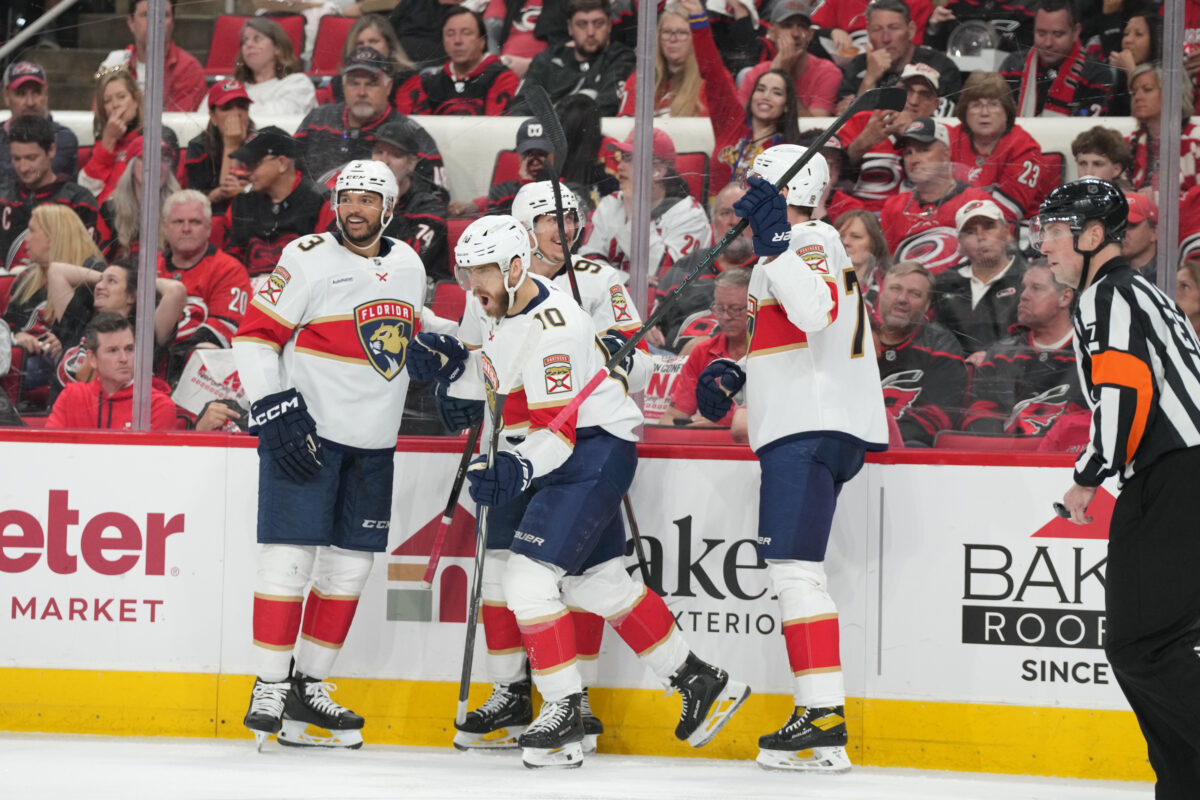
What makes these players unique is their salaries. Combined, their cap hit is just $2.4 million. To put that in perspective, the Hurricanes’ current fourth-line center, Jesperi Kotkaniemi, makes twice as much. The Panthers are saving significant money just to outperform opposing depth lines anyway—it’s brilliant.
With their salary savings, the Panthers have been able to pursue more star players. Fitting trade deadline acquisitions Brad Marchand and Seth Jones on the roster would’ve been difficult without cheap depth. But that’s the sacrifice they made, and they’re flourishing because of it.
Now, we get to the Philadelphia Flyers. Since general manager Daniel Brière was hired, they’ve had the exact opposite approach to depth. Spending high is their philosophy, and they haven’t been keen on trading any of those players for assets, either. The Orange and Black want to maintain expensive depth, and based on recent reports, that’s not changing anytime soon. In fact, they’ll probably double down.
They shouldn’t. The Panthers’ model is the one to follow.
Panthers’ Fourth-Line Excellence Is Contributing to Their Success
According to Natural Stat Trick, the Panthers’ fourth line of Greer, Nosek, and Gadjovich has outscored its playoff foes 4–0 at five-a-side hockey. They’ve controlled the pace of play with a 55.26% expected goal share.
The cheapest forward line you can have in the NHL nowadays is $2.325 million. As mentioned, they’re spending just $75,000 over that number—and succeeding.
The system the Panthers have goes a long way. While their fourth-line trio has done fantastically on the ice, perhaps their biggest contribution is not making a lot of money. In a league where all contenders are cap-strapped, spending as little as possible is the name of the game.
Florida’s approach has allowed them to maximize the number of stars on their roster. According to Byron Bader’s model, they have more than anyone in the NHL, with seven skaters. The biggest reason why the Panthers are so good is that they’re so talented. With immense skill spread from lines one to three, a fourth line that holds its own, a solid defense, and a true number-one goalie, it’s not surprising they’ve won nine of their last 10 playoff series.
Savvy spending on those stars does play into things, but the savings they get on their depth pay dividends. If Florida swapped with the Hurricanes’ fourth line, for example, they would not have had the cap space available to acquire Marchand at the trade deadline. If that didn’t happen, it’s very possible that they’d have an earlier offseason—the 37-year-old was arguably their most valuable player in the second round.
Just by existing, the Panthers’ Greer-Nosek-Gadjovich trio is helping the team’s quest for the Cup. Playing well is the cherry on top—they don’t get a ton of minutes, but have made every second count.
Florida has a championship-winning formula on their hands. Philadelphia has operated entirely differently in the “New Era of Orange.”
Flyers Are Yin to Panthers’ Yang
The Panthers like to be cheap with their depth so they can afford more stars, consequently raising their ceiling. The Flyers are the opposite.
The Orange and Black, despite being in a rebuild, have grown fond of floor-raising depth players. Nicolas Deslauriers, Ryan Poehling, and Garnet Hathaway, a possible fourth line for the team next season, are set to make $6.05 million against the 2025–26 cap, collectively. Noah Cates, a career bottom-six forward whose contract expires this offseason, is coming off a $2.625 million cap-hit deal.
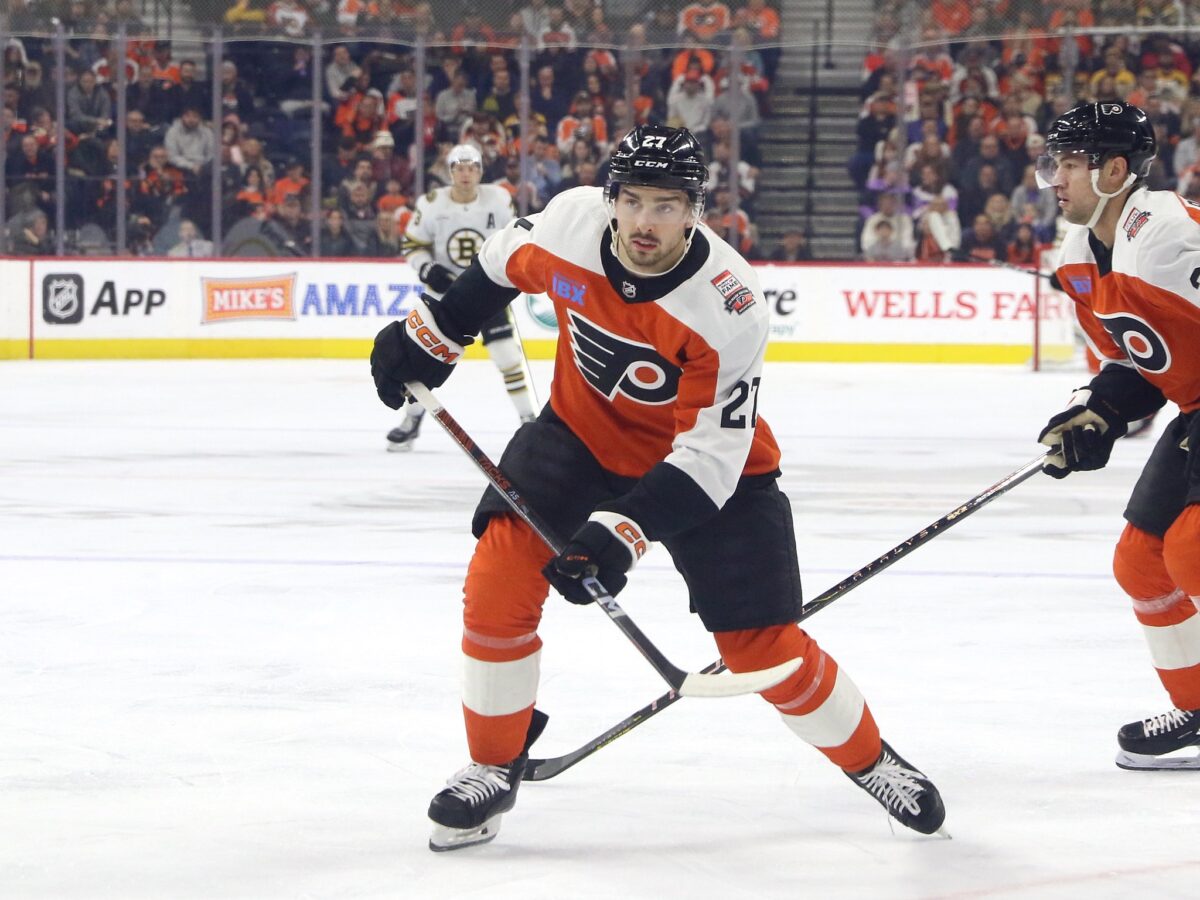
Last offseason, while the Flyers focused on extending depth players, the Washington Capitals traded them. They flipped Beck Malenstyn for a 2024 second-round pick, which became defenseman Cole Hutson. He had a tremendous freshman season in the NCAA, scoring 48 points in 39 games. His brother, Lane, also had 48 points in 39 games when he was an NCAA freshman, back in 2022–23. The latter is likely to win the Calder Trophy this season as the NHL’s best rookie.
I pointed this trade out when Hathaway was extended by the Flyers about a calendar year ago. It’s more relevant than ever today, with the younger Hutson having a tremendously bright future. Instead of maximizing the trade value of their depth, Philadelphia has been too scared to let go. Not only is that costing them money, but it’s costing them the ability to replicate Malenstyn-esque trades. Pursuing stars is more challenging when using this method.
This isn’t to say the Flyers have to replicate the Panthers to be successful, as the Vegas Golden Knights won the 2023 Stanley Cup with a quality fourth line. Still, it’s important to point out the downsides to what Philadelphia is doing, of which there are many.
Flyers May Continue to Go in the Opposite Direction
The Flyers’ new head coach, Rick Tocchet, was hired with a lot of risks. His nine seasons as an NHL bench boss have seen him make the playoffs just twice, and, more importantly, star forwards like Clayton Keller and Elias Pettersson saw their production suffer under his guidance.
The introductory press conference of their new hire was an opportunity to share why they like Tocchet in spite of his history. Well, they didn’t really do that. But one thing that was mentioned specifically was Tocchet’s ability to bring in free agents.
Going from an unpopular John Tortorella to a charismatic Tocchet makes this a reasonable claim. If that was the deal-breaker for someone like superstar Mitch Marner, a questionable hire would be immediately worth it, in my opinion.
Related: Flyers’ Rick Tocchet Hire Is a Home Run if it Lands Mitch Marner
Unfortunately, the only legitimate selling point on Tocchet that the team presented may have actually been exaggerated. Insider Anthony Di Marco of Daily Faceoff said that the team is willing to add, but told fans not to expect a “big fish.”
My takeaway from this, personally, is that the Flyers may continue the path they’ve been on. Let talent walk away, and spend heavily on their bottom six instead. The best-case scenario, if this report ends up being accurate, is adding a second-line player.
Now, the Flyers don’t deserve any criticism until they’ve actually done something to earn it. The 2025 NHL Draft is still a month away, and free agency is even more distant. But there’s a danger of the status quo being retained here.
If the Flyers want to move in the right direction, they may want to look to the defending Stanley Cup champions. Florida’s cost-effective fourth line has contributed to their winning ways. If Philadelphia can copy it, they will have more breathing room cap-wise to bring in someone like Marner.

